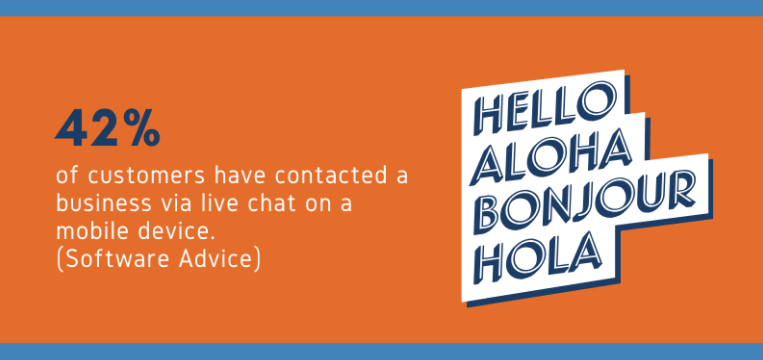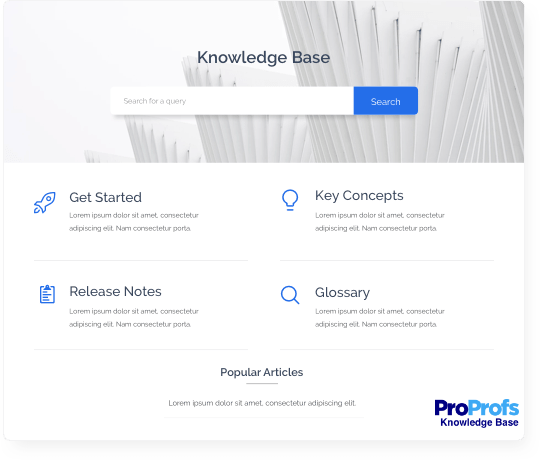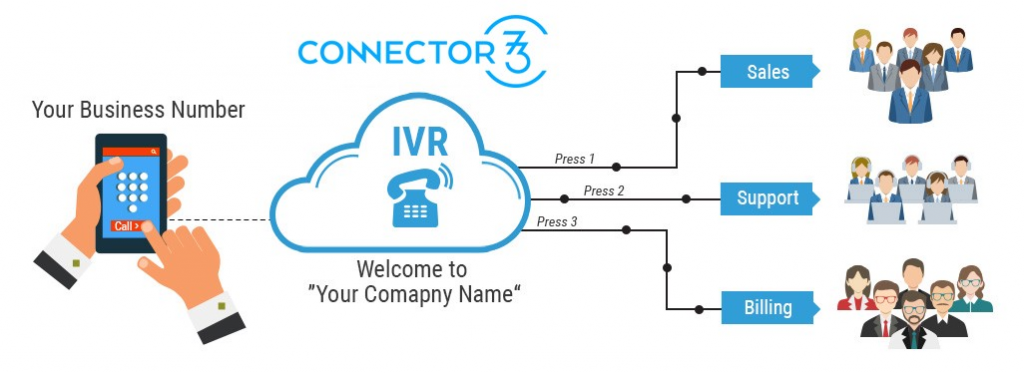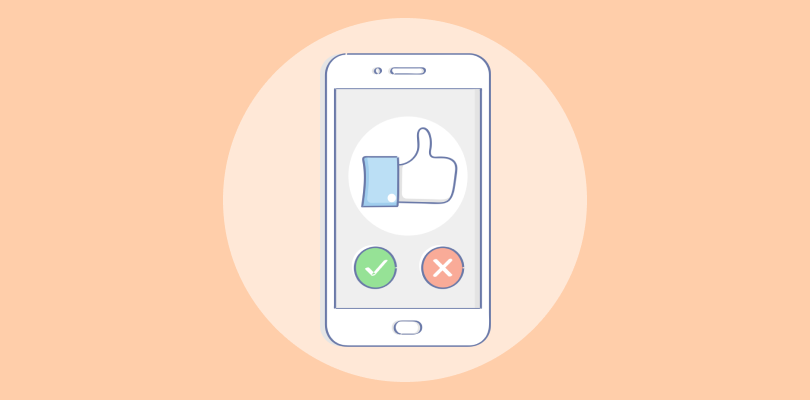At some point in time, we all have contacted a business for help.
While your parents or grandparents might have relied solely on phone or email support, Generation Z loves to explore different types of customer service channels such as social media, live chat, video support, and more.
The modern customer service landscape is not limited to a single channel. In fact, companies with powerful omnichannel customer engagement witness a 9.5% year-over-year increase in annual revenue.
But here comes a challenge!
How do you know which type of customer service to prioritize?
If you are going through a similar dilemma, we are here to help you. In this blog, we will explore the 10 popular customer service types. We will also discuss their pros in detail so that you can reach your customers on the channels they love the most.
10 Types of Customer Service Your Business Can Adopt Today
Here is the outline for the most common types of customer services. Let’s explore each one of them and see how they can help your business in improving the customer experience:
1. Email Customer Service
Right from the first electronic mail sent in 1971 to the billions of emails that are sent and received every day, we have come a long way.
Among the different types of customer service available, customers consider email as a more trustworthy and professional channel. No wonder 12% of customers still choose email to register their requests.
The best part about email customer service is that it doesn’t cost a fortune. Your agents get more time to respond, and they can use canned responses or email templates for faster replies.
One major challenge with email customer service is that after a point in time it becomes difficult to keep track of every single email. In such a case, you can adopt customer email management software to convert emails into tickets and ensure they can never slip through the cracks.
Why we picked it:
- Record and document customer conversations over a period of time
- Add a professional touch to your customer service using email signatures
- Automated email notifications can be used to update customers about the status of their issue or support ticket
- Easily attach relevant images, videos, docs, or other files
Read More: 11 Best Canned Response Templates for Customer Support Emails
2. Live Chat Customer Service

If there is one channel that is gaining exponential popularity among business owners and customers, it is live chat.
According to research conducted by Forrester, customer service provided by live chat is 17-30% cheaper than a phone call. The reason is simple – the phone does not allow you to manage multiple customers simultaneously.
When you compare the various customer service options, live chat offers the fastest response times to customers. In fact, customers can chat with an agent and carry on with their day-to-day tasks at the same time.
In addition to this, you can also offer proactive customer service. Whenever a customer has items added to the shopping cart but has not made a purchase yet, you can share proactive chat messages to politely ask if they need any assistance.
Why we picked it:
- Assist customers in real-time when they are shopping and increase sales
- Agents can handle multiple customer chats at the same time
- Easily embed a chat window on your website and explore customization options
- Easily integrate upselling and cross-selling opportunities
Read More: 30 Customer Service Tips for Delightful Customer Experiences
3. Chatbot Customer Service
While shopping online or ordering food, it is common for people to interact with chatbots to get assistance with their basic queries. For example, when a customer types the question “where is my food?” the bot shares the live update and helps the customer instantly.
The adoption of Chatbots is a great way to automate your customer service and delight customers. Around 67% of global customers have interacted with a chatbot to get customer support over the past 12 months.
Now, it is important to note that if a chatbot is unable to resolve a customer issue, that does not mean the end of the world. In fact, if the customer needs further assistance, bots can be used to route customer chats to relevant agents or teams.
However, despite the popularity and cost-saving benefits, conversations with chatbots lack a human touch.
Why we picked it:
- Be available to customers even when your team is offline
- Schedule meetings with customer service or sales teams
- Automatically share links to relevant self-help articles, videos, etc.
- Improve your chatbot function over time by adding more questions and answers
Read More: 10 Service Desk Automation Ideas that Boost Performance and Quality
4. Phone Customer Service
At some point or the other, we all have interacted with a customer service agent over the phone. After all, who can forget the experience of getting relevant help without the need to visit a physical store or office?
Phone support has been a dominant customer service channel for decades, and you will be surprised to know that it is still is. Around 61% of US customers prefer phone as their go-to channel to resolve customer service issues.
But what makes phone customer service so popular?
While many customer conversations begin on digital channels such as live chat or social media, most of them have to be escalated to a phone call for relevant support. In addition to this, an attentive human voice can make all the difference when it comes to fostering a good rapport with a customer.
Why we picked it:
- Deliver a personalized experience to each customer
- Customers can interact with an agent and get the right solution in real-time
- Improve your chances of First Contact Resolution (FCR)
- Offer automated call-back feature to interact with customers at their convenience
5. Self-Service Knowledge Base

Modern customers want to feel empowered and get the opportunity to resolve their basic queries on their own. After all, who would want to wait on hold for 5 minutes or receive an email response days after an incident?
Self-service has emerged as a ray of hope for customers who wish to get relevant help with minimum efforts. Over 60% of US customers prefer an automated self-service portal, such as a website or mobile app, for simple queries.
Now, the idea of self-service is indeed a fascinating one. However, to make it work for your business, you will need to focus on the UX and SEO of your help pages. If customers have to struggle to find relevant information, their experience gets hampered.
Why we picked it:
- Be available to both existing customers as well as prospects 24×7
- Reduce your support ticket volume significantly
- Allow agents to focus on more important customer issues
- Create a multilingual knowledge base to cater to customers from different parts of the world
6. Social Media Customer Service
Social media is no longer a platform that is limited to social interactions between friends and families. Today, every business needs to have a strong social media strategy as a single tweet is powerful enough to destroy a brand’s reputation.
Customer expectations in regards to social media customer service are skyrocketing. Around 20% of US customers demand an immediate response to their social media questions or complaints.

This makes it all the more challenging for your business to meet such high expectations. However, by keeping a keen eye on messages, posts, comments, and group discussions, you can reach customers before it’s too late.
By providing timely help, you can show your potential customers how caring you are for your customers.
Why we picked it:
- Customers can reach you right from their most-used social media apps
- Share proactive messages to update customers about downtime
- Allow customers to help each other by creating help or community pages
- Share customer service success stories and enhance brand reputation
Read More: How to Use Social Media for Delightful Customer Service
7. Walk-in Customer Service
Remember how you had to visit the customer service section of a brand to return a product that you had recently purchased?
Although online shopping has been in trend since the last decade, most businesses still have a separate customer service/help section within their brick-and-mortar stores.
One-on-one customer service interactions can prove to be magical when it comes to building a rapport with your customers. Your representatives can get the opportunity to have a meaningful conversation, know a customer better, and get feedback (verbal as well as non-verbal) in real-time.
However, on the contrary, in-person interactions can sometimes put you on the spot. You are required to offer a solution to an angry customer right away, or the situation could get worse. In fact, a single customer case can take up the majority of your time – leading to a slight delay in the work you were scheduled to do.
Why we picked it:
- Have face-to-face interactions with customers and understand their problems better
- Win the trust of your customers as well as prospects
- Get the opportunity to recommend other similar products and increase sales
- Get non-verbal cues from customers (eye contact, gestures, facial expressions, etc.)
8. Video Customer Service
Video is soon becoming one of the most powerful types of customer service. Live video sessions can help you offer technical support, product demonstrations, or simply understand the challenges faced by a customer.
With the ongoing COVID-19 pandemic where social distancing is the new normal, live video customer service has helped businesses stay connected with their customers.
But videos don’t always have to be live. You can record tailored walkthroughs and demonstrations and share them via social media, help center, or other channels. This will allow customers to access the support videos anytime and replay segments to apply the troubleshooting steps better.
To become a brand that is known for personalized customer service, you can even record thank you videos for customers and appreciate them for being loyal to your business.
Why we picked it:
- Schedule online video meetings in seconds
- Uploading support videos online can help you reduce your ticket volume
- Have personalized, one-on-one interactions
- Easily share recorded videos on social media, help center, or other channels that are convenient for the customer
9. On-Site Customer Service
This type of customer service is offered right at the home or the workplace of a customer. On-site customer service can involve tasks such as installing a product at the site, annual maintenance, or product repairs.
On-site customer service is usually very expensive. You will have to worry about aspects such as hiring remote professionals, their training, travel expenses, and more. Therefore, most businesses can afford to offer these services only to premium customers and not to standard customers.
However, certain products require the physical presence of an assistant when something goes wrong. For instance, if there is a server or networking issue, an IT technician needs to be present at the location to get things fixed.
Why we picked it:
- On-site customer service acts as a more convenient option for customers
- Real-time service can lead to better problem resolution
- Serves as the last resort when all other channels have failed
- Customers can check the authenticity of parts being replaced
10. Interactive Voice Response (IVR) Customer Service

Interactive Voice Response (IVR) refers to the technology that allows customers to interact using their voice or mobile keypad. Based on the inputs provided by the customer, IVR systems can understand their problem and offer the correct information.
IVR can handle basic customer requests with ease. For example, when a customer calls to confirm an appointment, the IVR might ask for the customer ID and offer the requested information.
A thoughtfully created IVR can improve the customer journey. However, improper implementation can spoil the whole purpose and lead to frustrated and unhappy customers.
You need to be extra careful – a long and complicated IVR menu can confuse callers, and a short menu may not include important options.
Why we picked it:
- IVR is available 24/7/365 to assist customers with their queries
- It can make your business appear more professional
- Can improve the call traffic flow by routing customers to relevant agents or teams
- Your agents get the time to focus on more pressing issues
Read More: Reduce Your Help Desk Calls in 10 Easy Ways
So Which Types of Customer Service Should You Choose?
The types of customer service you choose can make or break your brand. Your decision will depend upon factors such as the demographics of your target audience, their interests, your company’s budget, team size, and more.
- Popular Channels: Identify the channels that are preferred by your target audience. You can share relevant surveys for the same asking customers to arrange communication channels in order of their preferences.
- Team Size: If you have a small team and more customers to take care of, you can invest in self-service options such as knowledge base, IVR, chatbots, etc. Similarly, ijnkihbgf manpower is not a concern, you can easily go for channels such as phone or video support.
- Trends: The customer service landscape is always changing. Therefore, It is important to keep an eye on the different types of customer service that are emerging in your industry. This will help you meet customer expectations.
Say Yes to Top-Notch Customer Service!
Modern customers demand more than a single channel to engage with their favorite brands. While some customers are tech-savvy and want digital channels such as live chat, social media, etc., others prefer traditional channels such as the phone or email.
To choose the best types of customer service for your growing business, you can always directly ask your customers. In addition to this, you must keep a tab on emerging trends to offer delightful customer service experiences to your audience.
Remember, the right blend of customer service channels will help you offer 24×7 support, reduce costs, create sales opportunities, and most importantly – keep your customers happy.
 Tips
Tips
We’d love to hear your tips & suggestions on this article!
FREE. All Features. FOREVER!
Try our Forever FREE account with all premium features!

 We'd love your feedback!
We'd love your feedback! Thanks for your feedback!
Thanks for your feedback!







